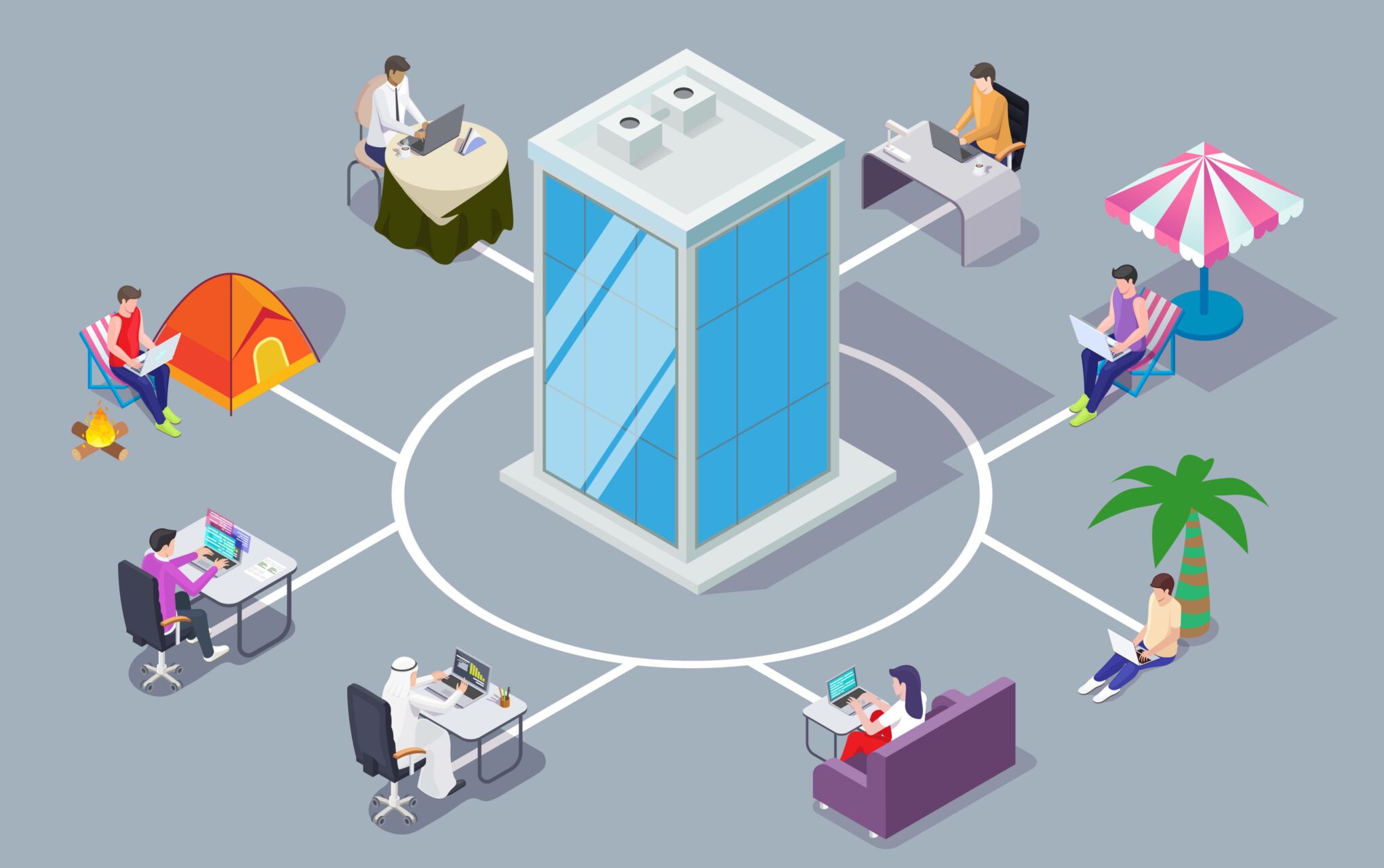The past two and a half years have forced organizations to re-imagine learning and development programs that have traditionally centered around in-person work environments. While remote employee engagement remains a challenge for many, it is vital for organizations to transition the delivery of L&D programs to work across various settings. In many ways, the hybrid workplace has made L&D initiatives easier to deploy – by removing barriers created by the narrower construct of traditional in-person learning. To take advantage of these benefits, L&D leaders must rethink how programming is consumed, delivered and enacted to select the best formats for their employees and organizational culture.
While leading my own organization through these changes, I have found three impactful ways to leverage the opportunities presented by the hybrid workplace.
Virtual and in-person onboarding and learning
Some of the best-in-class onboarding programs are now virtual experiences that bring new joiners together nationally – or even globally – in more connected, consistent and scalable ways. Within hybrid workplaces, organizations can level-up virtual learning programs further by including a blend of in-person learning and collaboration. This hybrid blend of formats allows for the flexibility and autonomy that virtual work offers, coupled with the benefits of in-person collaboration and learning. By offering a mix of asynchronous self-study, more intimate one-on-one sessions, and virtual cohort classroom time, organizations can provide new employees an improved anytime-anywhere onboarding experience.
To illustrate the power of this blended approach, we recently delivered a panel program during a live, in-person regional training session that featured an intimate set with minimal visual supports. Several months later, we translated that same program into a virtual delivery format via Zoom, incorporating heavy use of audio and video cues to transition topics and spotlight panelists. These distinct virtual and in-person sessions shared the same purpose and learning objectives but had different formats that we adapted to each audience.
To get this blended approach right, it’s crucial to correctly determine the ideal mix of virtual and in-person learning within onboarding programs. We found that new hires who attended less than 50 percent of onboarding activities were more than twice as likely to have left the organization. To achieve necessary participation and engagement, organizations must consistently assess and iterate revisions to these programs based on feedback and gaps in connectedness. This constant iteration allows learning leaders to remain agile and make key changes, whether limiting the size of cohorts or adding additional breakout time for different groups.
Synchronous and asynchronous blend
Asynchronous self-study learnings allow employees to access content anytime, anywhere, and on a multitude of devices. It’s also been shown time and time again that strong culture and a feeling of connectedness within an organization are key to employee retention. By blending asynchronous learning opportunities with the chance to meet in-person, employees can learn at their own pace while still being able to learn through group work, discussions and shared experiences. This also allows organizations to prioritize the most critical developmentl to an employee’s success by blending necessary formalized training with important on-the-job experiential learning.
For example, organizations may consider offering recorded trainings for introductory sessions that can be done virtually and at each individual’s pace, followed by more advanced sessions that bring teams together to focus on discussion and application of the concepts. Our team recently rolled out a sales effectiveness program in this way that we found to be effective and well-received by participants.
Microburst learning
Microburst learning lends itself to integration with work – rather than a distraction from it – by stretching the learning out further instead of packing too much into a short time frame. This type of learning model can be used on the job and then in continuity at later points. By breaking both asynchronous and synchronous learning down into smaller chunks, people don’t have to dedicate an hour or more each time but can space their learning out at a more manageable pace.
Our organization experienced the effectiveness of microburst learning recently when we adjusted our approach to a required eLearning course for our sales team. After hearing how teams were translating the learnings into practice, we identified a few areas that needed reinforcement and designed “microburst” messages over the course of a few months. We saw that this drip campaign approach helped teams better commit to the new practices and offered additional touchpoints with other colleagues.
This example is one of enacting user-centered design, a concept where learning and development programs, virtual dashboards, and surveys are designed and continuously iterated based on user feedback. Leveraging this approach allows L&D functions to gather and refine learning needs directly from learners working in a hybrid environment. It takes much of the guesswork out of learning effectiveness and adoption.
Rethinking what L&D success looks like
In tandem with redesigning learning programming and its delivery, organizations must also rethink what the success of L&D programming looks like within a hybrid environment. Instead of measuring success only by improved performance, we must also consider impacts on connectedness, engagement, growth of culture and learners’ organizational affinity.
While learning leaders must learn how to best engage employees in today’s hybrid environment, we are also lucky to have a variety of touchpoints to do that, both through virtual and in-person learning programs. Learning is only as effective as our ability to engage learners, and organizations must continuously iterate and redesign programs to meet them where they are. By remaining agile and open to change, organizations can overcome challenges to ensure that their professional teams continue to learn in an ever-evolving workplace.















